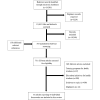A Digitally Competent Health Workforce: Scoping Review of Educational Frameworks
- PMID: 33151152
- PMCID: PMC7677019
- DOI: 10.2196/22706
A Digitally Competent Health Workforce: Scoping Review of Educational Frameworks
Abstract
Background: Digital health technologies can be key to improving health outcomes, provided health care workers are adequately trained to use these technologies. There have been efforts to identify digital competencies for different health care worker groups; however, an overview of these efforts has yet to be consolidated and analyzed.
Objective: The review aims to identify and study existing digital health competency frameworks for health care workers and provide recommendations for future digital health training initiatives and framework development.
Methods: A literature search was performed to collate digital health competency frameworks published from 2000. A total of 6 databases including gray literature sources such as OpenGrey, ResearchGate, Google Scholar, Google, and websites of relevant associations were searched in November 2019. Screening and data extraction were performed in parallel by the reviewers. The included evidence is narratively described in terms of characteristics, evolution, and structural composition of frameworks. A thematic analysis was also performed to identify common themes across the included frameworks.
Results: In total, 30 frameworks were included in this review, a majority of which aimed at nurses, originated from high-income countries, were published since 2016, and were developed via literature reviews, followed by expert consultations. The thematic analysis uncovered 28 digital health competency domains across the included frameworks. The most prevalent domains pertained to basic information technology literacy, health information management, digital communication, ethical, legal, or regulatory requirements, and data privacy and security. The Health Information Technology Competencies framework was found to be the most comprehensive framework, as it presented 21 out of the 28 identified domains, had the highest number of competencies, and targeted a wide variety of health care workers.
Conclusions: Digital health training initiatives should focus on competencies relevant to a particular health care worker group, role, level of seniority, and setting. The findings from this review can inform and guide digital health training initiatives. The most prevalent competency domains identified represent essential interprofessional competencies to be incorporated into health care workers' training. Digital health frameworks should be regularly updated with novel digital health technologies, be applicable to low- and middle-income countries, and include overlooked health care worker groups such as allied health professionals.
Keywords: competency; digital competency; digital health; eHealth; framework; health professions education; medical education; review.
©Nuraini Nazeha, Deepali Pavagadhi, Bhone Myint Kyaw, Josip Car, Geronimo Jimenez, Lorainne Tudor Car. Originally published in the Journal of Medical Internet Research (http://www.jmir.org), 05.11.2020.
Conflict of interest statement
Conflicts of Interest: None declared.
Figures



References
-
- Catwell L, Sheikh A. Evaluating eHealth interventions: the need for continuous systemic evaluation. PLoS Med. 2009 Aug;6(8):e1000126. doi: 10.1371/journal.pmed.1000126. https://dx.plos.org/10.1371/journal.pmed.1000126 - DOI - DOI - PMC - PubMed
-
- WHO Guideline: Recommendations on Digital Interventions for Health System Strenghtening. World Health Organization. 2019. [2020-10-08]. https://apps.who.int/iris/bitstream/handle/10665/311941/9789241550505-en.... - PubMed
-
- Shaw T, McGregor D, Brunner M, Keep M, Janssen A, Barnet S. What is ehealth (6)? Development of a conceptual model for ehealth: qualitative study with key informants. J Med Internet Res. 2017 Oct 24;19(10):e324. doi: 10.2196/jmir.8106. https://www.jmir.org/2017/10/e324/ - DOI - PMC - PubMed
-
- Global Diffusion of Ehealth: Making Universal Health Coverage Achievable. World Health Organization. 2016. [2020-10-08]. https://apps.who.int/iris/bitstream/handle/10665/252529/9789241511780-en....
Publication types
MeSH terms
LinkOut - more resources
Full Text Sources
Medical

